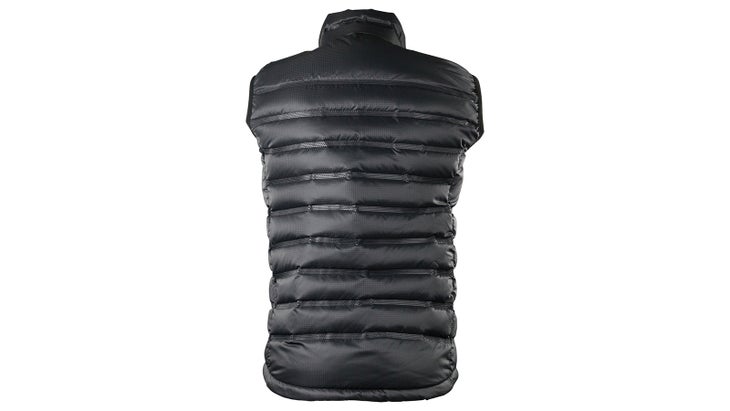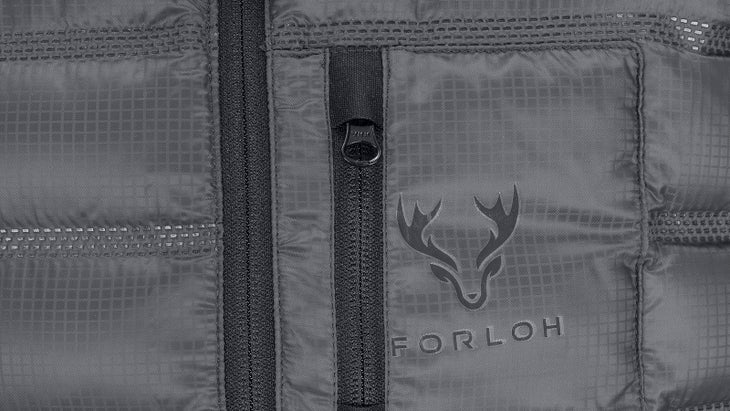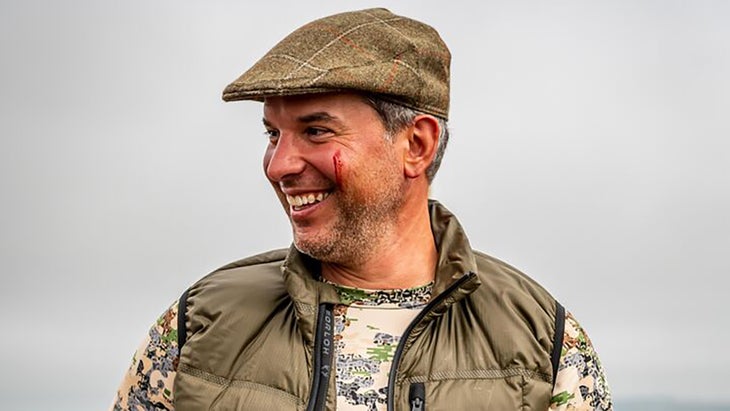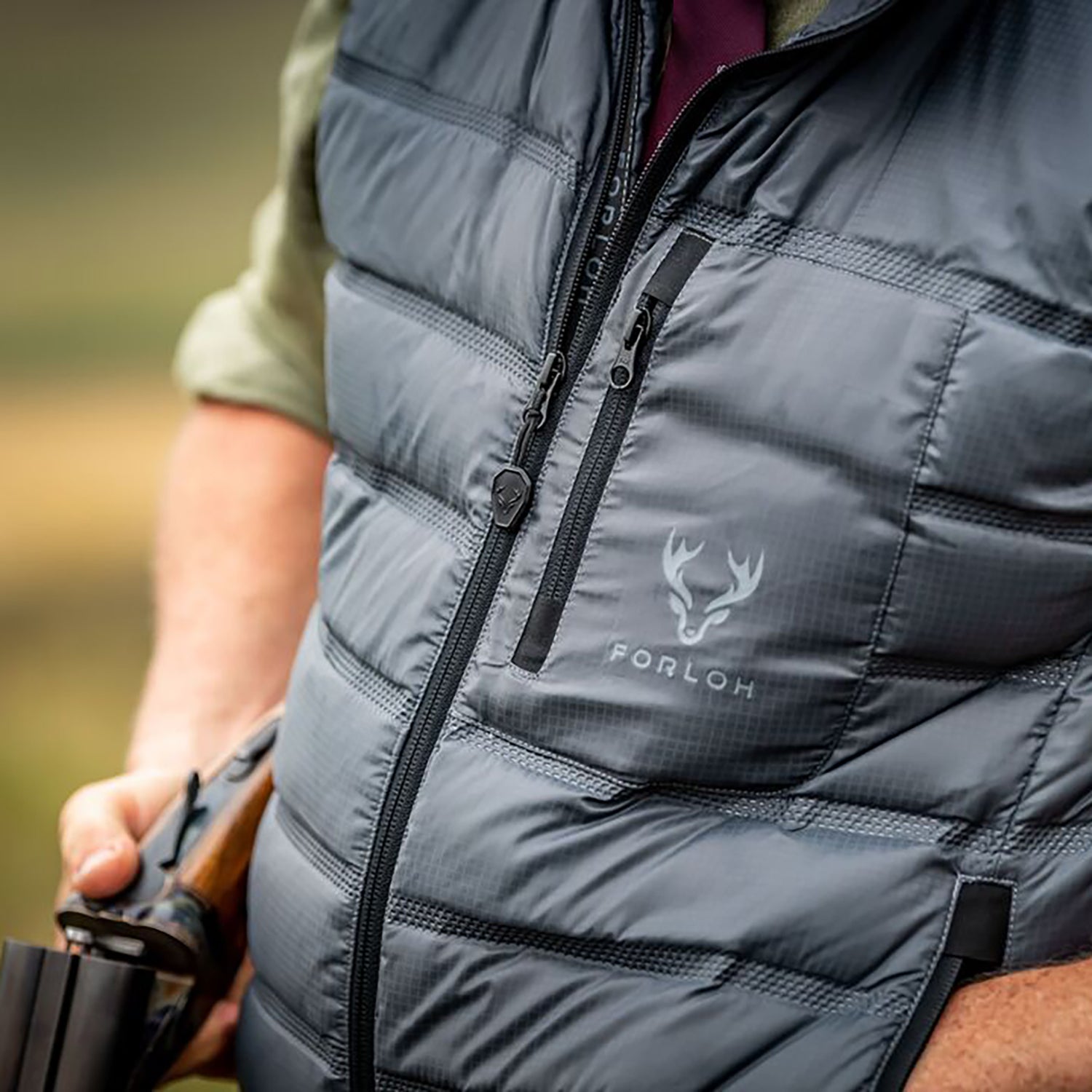What does it mean to make technical apparel in the United States? For Forloh, a small hunting brand based in Whitefish, Montana, making stuff onshore means doing things differently. For example, of down jackets, vests, and pants takes the traditional formula for a lofted insulation layer, and reinvents it as a breathable hybrid of mid and outer layers in one.��
That kind of creativity is required when it comes to producing down in America. Eighty percent of the global down supply comes from China, . The small amount of down that’s manufactured ethically or elsewhere is largely purchased by the bedding industry. And regardless of the source, global brands dominate the purchasing market.��
Not much is left for independent players. Add the constraint of buying it in America, and you’ve created a huge challenge. And that’s why Forloh uses 650-fill down: it was the highest quality they were able to source in this country.��
Fill power measures the number of cubic inches one ounce of a given down variety is able to loft to fill. It’s a measure of compressibility. Where a typical high-end down-filled garment from a large brand might use 900-fill down, and be capable of compressing into a tiny package when stuffed into a backpack as a result, 650-fill is more typically used in big, heavy parkas, where compressibility isn’t needed.��

Sourcing American-made down was the job of , a veteran product designer with experience at The North Face, Black Diamond, KUIU, Spyder, and Obermeyer. He was approached by Forloh’s founder, Andy Techmanski, with the idea for an American-made, American-sourced apparel brand in 2019. A former electrical lineman with a nose for business, Techmanski’s dream may have sounded quixotic at the time, but it attracted the curiosity of Yturri, who had spent three decades watching technical apparel being off-shored to the far east.��
Yturri went in search of an American source for down willing to work within the limited ordering capacity of an independent startup, and eventually found a pillow maker. The supplier had never applied a durable water repellant (DWR) treatment to its product before, so that became Yturri’s next challenge—and that was just the start. With a raw material incapable of competing with the fill power of larger brands, the designer needed to come up with novel solutions to create a competitive product.��
“The needs of an adventure hunter aren’t the same as high-altitude alpinists or general ounce-counting backpack adventurers,” says Yturri. “When I hear someone say ‘ultralight down,’ to me that means, ‘treat me gently, I tear easily.’”
So Yturri set about creating a solution he describes as “lightweight enough,” while maximizing the garment’s durability and weather resistance.��
One of the reasons ultralight down jackets tear easily is that designers often pair ultra high fill power down with extremely thin face fabrics. This helps with weight and compressibility, but as anyone who’s ever snagged their expensive new ultralight jacket in a zipper will tell you, it also leads to fragility.��
Another problem with traditional down jackets? Their stitched baffles create hundreds of perforations in those thin face fabrics, each large enough for liquid water to invade the down insulation. Today, down insulations are almost always DWR-treated, but those water-repellant coatings are only a partial solution. Get down wet, and it will lose its loft—even with a good DWR.��
To solve for this, Yturri went with a 70 Denier nylon ripstop face fabric—ten times as heavy as some ultralight jackets—inside and out. And rather than control down migration with stitched baffles, he sought out a novel sonic welding process that adheres the inner and outer face fabrics to each other without puncturing them. “There is only one factory in the USA with the high-end machines needed to accomplish this precision in large scale production,” says Yturri.��
The end result is, he says, “strong enough to be used as an outermost layer, light enough to be used as a layering piece. That was the magic combo.”

The sonic welding process offers another benefit: breathability. Forloh’s proprietary welding process , each small enough to block liquid water, but large enough to allow water vapor—and body heat—to escape. The principle is similar to the way waterproof-breathable membranes work, just here with no membrane.��
The end result is completely unique. The thick, durable, nearly-waterproof nylon face fabric acts like a burly soft shell, keeping wind and precipitation away from the down and the wearer’s body, while the micro-perforations allow excess heat and sweat to ventilate outwards. With that sweat free to escape, and precipitation prevented from invading, the down fill is able to stay drier than in most other down garments. It’s an active mid-layer combining the warmth of down and the breathability of fleece, all in a single jacket, vest, or pair of pants that’s more reliably warm, and also serves as a shell. It may not be as light as other mid-layers (Forloh has yet to publish an official weight, or lab-verified breathability numbers), but it also fills more roles in a layering system than any single item.��
“Thermoneutral is the ideal go-to, 80-percent-of-the-time down piece; strong enough, and treated through-and-through water-repellent, to be used as an outer layer; yet light enough to be used as a mid-layer in a tri-layer system,” says Yturri.��
Back in 2019, making stuff in America was mostly about creating jobs. But that changed on March 11, 2020, when the World Health Organization declared a global pandemic. Rapidly, making stuff in America become about supply chains.��With orders already placed at American factories for that Thermoneutral face fabric, Techmanski was uniquely positioned to respond to the crisis. Nearly waterproof, very breathable, and incredibly durable, it turns out that face fabric also made perfect medical gowns. At a time when single-use gowns were going for $4 to $5, Techmanski was able to offer healthcare providers good for up to 600 washes for $40. State and federal governments .��

And that, in a nutshell, sums up the promise American-sourced, American manufacturing holds. It’s not only about jobs; it’s about solving big problems with innovation, because innovation is necessary.��
“American manufacturing still possesses a can-do attitude,” says Techmanski. “We are able to innovate with new technologies much faster, and at a higher standard of workmanship, than the international competition. America builds just plain better products.”


